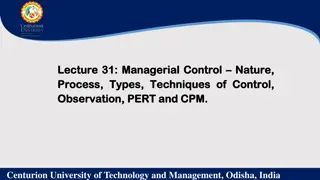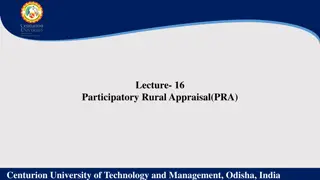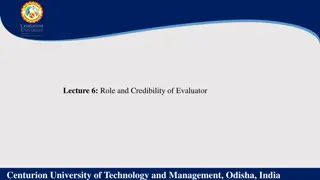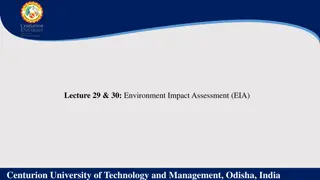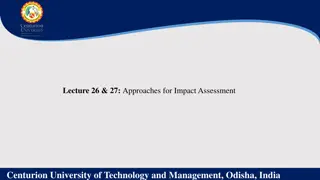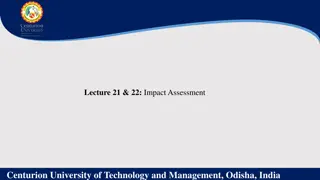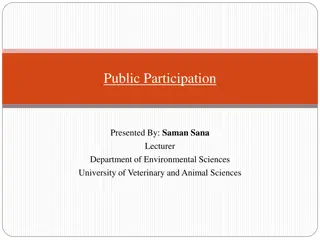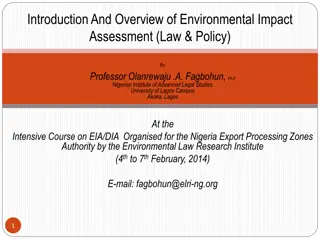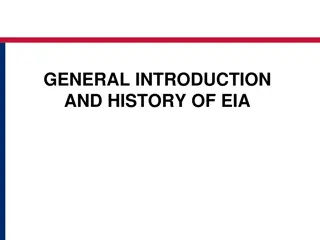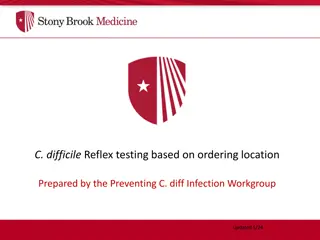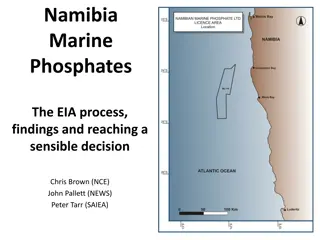Steps in the EIA Process at Centurion University, Odisha, India
The Environmental Impact Assessment (EIA) process at Centurion University involves crucial steps such as screening, scoping, baseline data collection, impact prediction, mitigation measures, public hearing, decision making, and monitoring. It is a cyclical process that requires thorough assessment of project impacts and implementation of environmental management plans.
Download Presentation

Please find below an Image/Link to download the presentation.
The content on the website is provided AS IS for your information and personal use only. It may not be sold, licensed, or shared on other websites without obtaining consent from the author. Download presentation by click this link. If you encounter any issues during the download, it is possible that the publisher has removed the file from their server.
E N D
Presentation Transcript
Lecture 31: Composition of the expert committees and Steps in EIA process Centurion University of Technology and Management, Odisha, India
The EIA Process EIA involves the steps mentioned below. However, the EIA process is cyclical with interaction between the various steps o Screening: The project plan is screened for scale of investment, location and type of development and if the project needs statutory clearance. o Scoping: The project s potential impacts, zone of impacts, mitigation possibilities and need for monitoring. o Collection of baseline data: Baseline data is the environmental status of study area. o Impact prediction: Positive and negative, reversible and irreversible and temporary and permanent impacts need to be predicted which presupposes a good understanding of the project by the assessment agency. Centurion University of Technology and Management, Odisha, India
o Mitigation measures and EIA report: The EIA report should include the actions and steps for preventing, minimizing or by passing the impacts or else the level of compensation for probable environmental damage or loss. o Public hearing: On completion of the EIA report, public and environmental groups living close to project site may be informed and consulted. o Decision making: Impact Assessment Authority along with the experts consult the project-in-charge along with consultant to take the final decision, keeping in mind EIA and EMP (Environment Management Plan). o Monitoring and implementation of environmental management plan: The various phases of implementation of the project are monitored. Centurion University of Technology and Management, Odisha, India
o Assessment of Alternatives, Delineation of Mitigation Measures and Environmental Impact Assessment Report: For every project, possible alternatives should be identified, and environmental attributes compared. Alternatives should cover both project location and process technologies. Once alternatives have been reviewed, a mitigation plan should be drawn up for the selected option and is supplemented with an Environmental Management Plan (EMP) to guide the proponent towards environmental improvements. o Risk assessment: Inventory analysis and hazard probability and index also form part of EIA procedures. Centurion University of Technology and Management, Odisha, India




